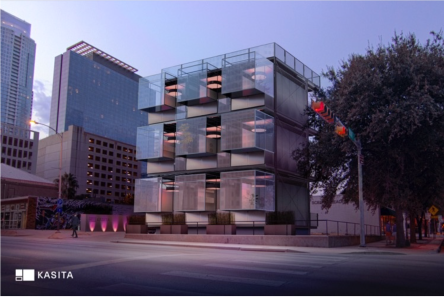Economic crises and housing shortages have inspired many architects and engineers. Their desire to solve modern housing dilemmas has resulted in several affordable, efficient, and accessible units that change the way that we see multifamily housing. Below are two recent example of space-savvy and cost-effective housing. They could promote big changes in the multifamily marketplace. Kasita He started off by living in a dumpster. Apparently, that’s a great place to seek revelation. Dr. Jeff Wilson, a professor at Huston-Tillotson University in Austin lived in a 33-square-foot dumpster for a year. The experience brought him a sense of balance, flexibility, and simplicity that he feels the need to share with others. Dr. Wilson created Kasita, a tiny house made for urban settings. Traditional tiny houses are solitary and rustic. They’re often set up in the suburbs or rural areas. Owning one—and having a place to put it—requires connections to friends with available lots or enough cash to own a plot of land. Kasita is not this type of tiny house. Each 208-square-foot Kasita is meant to be stacked on “racks,” frames that work a bit like the skeleton of an apartment building. Racks provide hookups for city utilities. By stacking Kasitas vertically, owners can make the most of available space in urban settings. No land ownership is required. Simply a phone call can move owners from a rack in one city to an available rack elsewhere. A big-rig transports the Kasitas to one of 10 racks scheduled to open nationwide. Kasitas are a far cry from the cramped, one-size-fits-all cubes seen in dystopia movies. Inside, Kasitas allow for customization through a unique, wall-mounted tile system: shelves, cabinetry, and countertops can be configured to owners’ specifications. These features are a nice addition to a fully functional...

